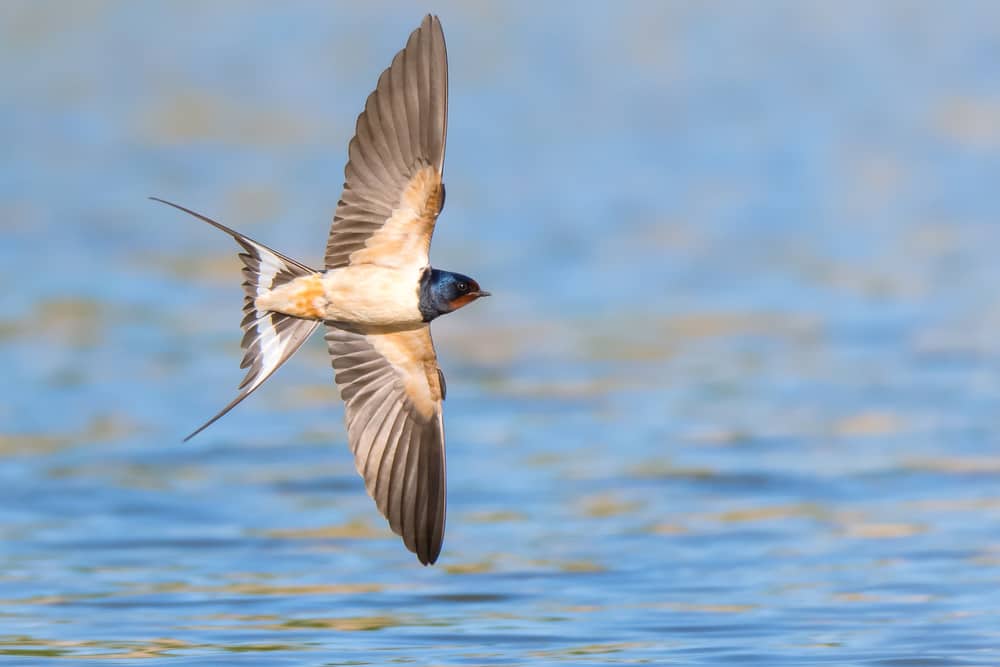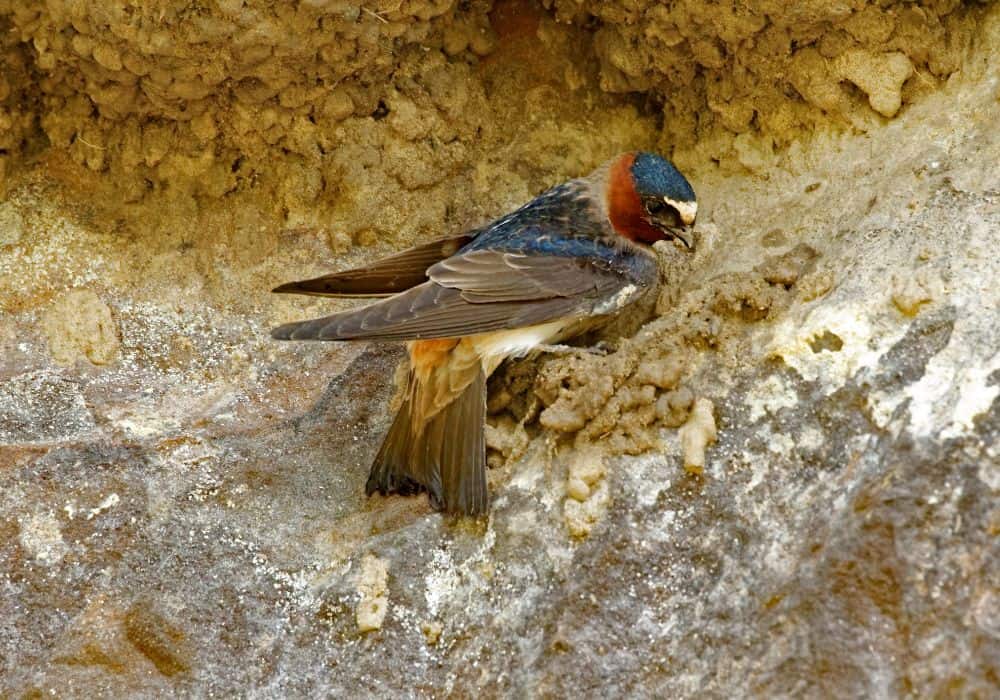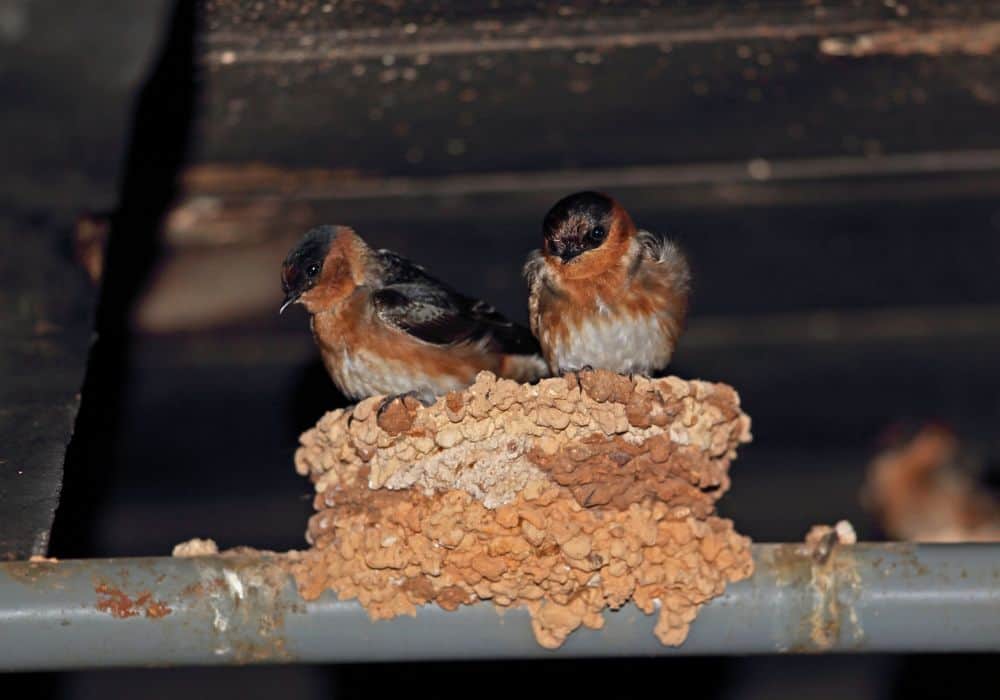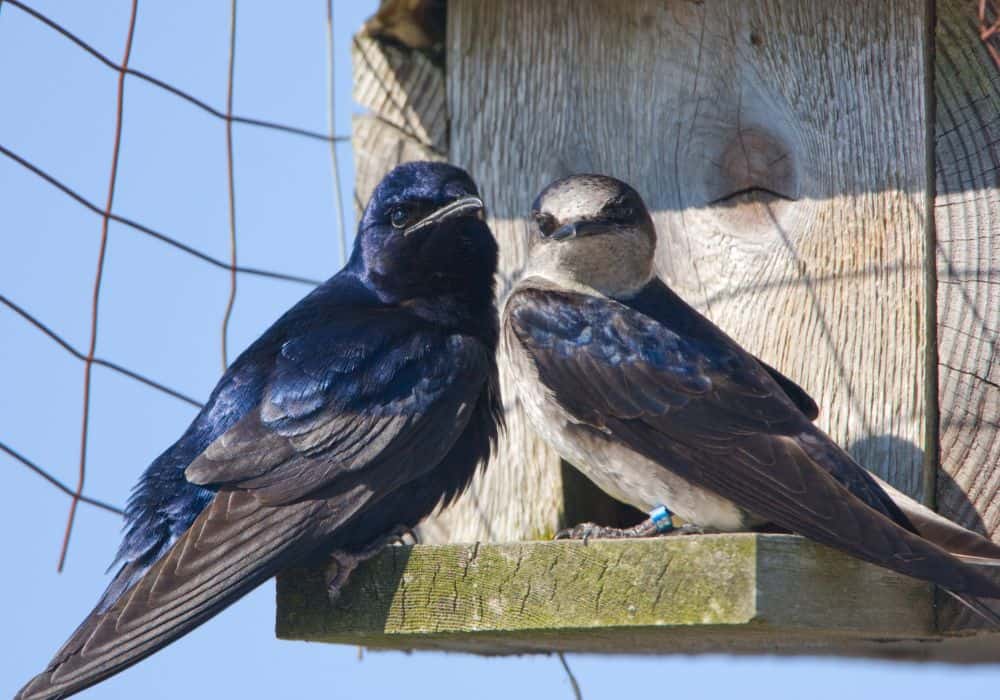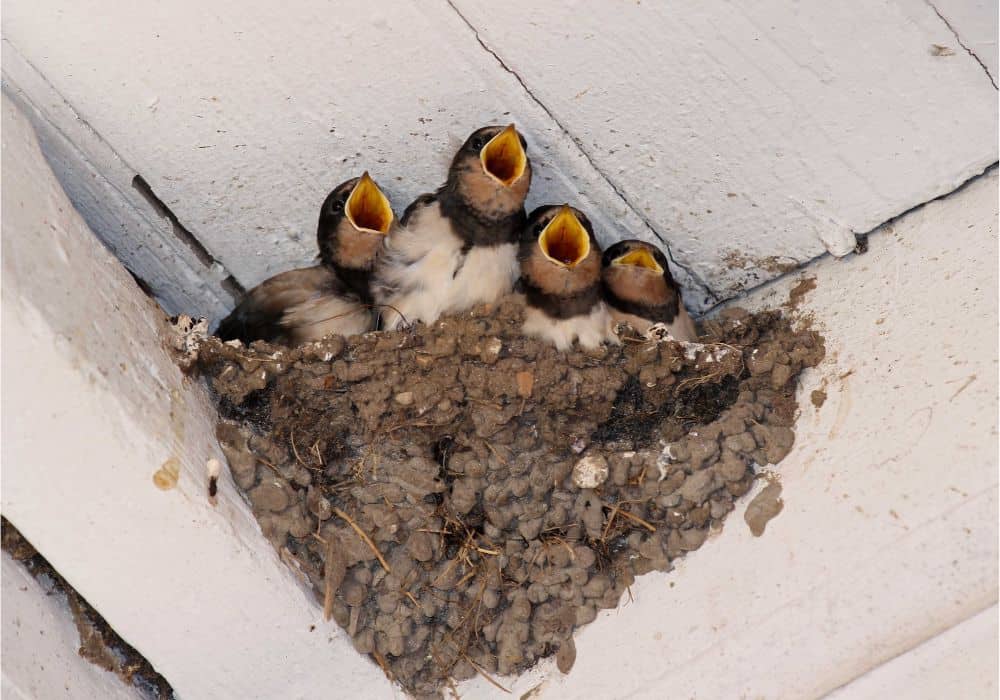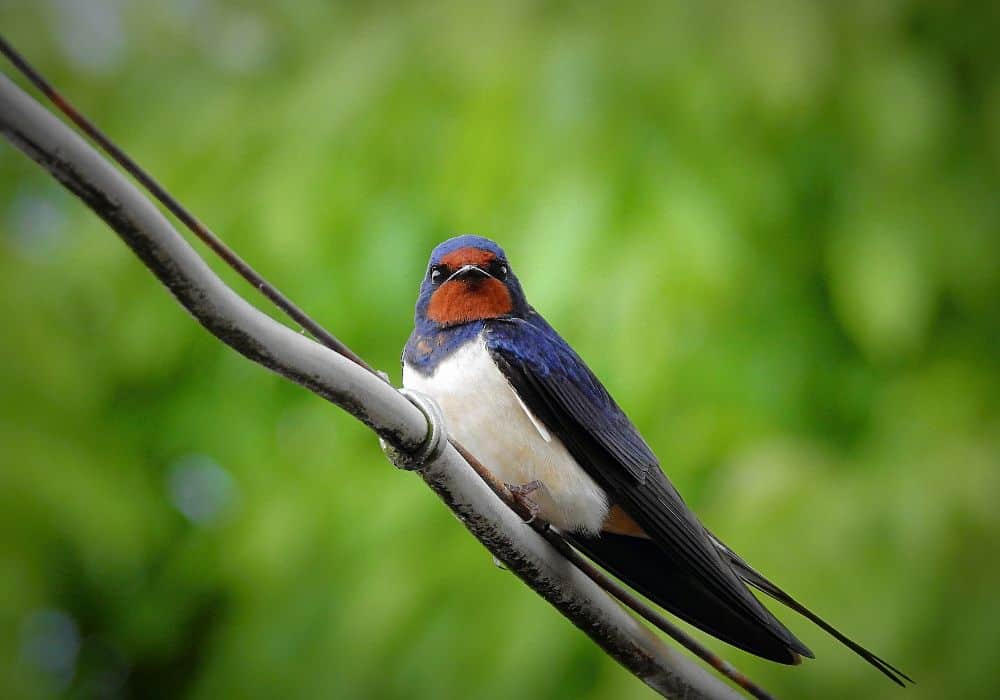Are you an avid bird watcher or enthusiast? Then you may know a thing or two about swallows, some of the most agile birds out there. Swallows are best known their grace and swiftness.
While there are many different types of swallows, the majority of them have a similar body shape. These birds are most known for their dark backs, red throats, and long tails. On average, they are about four to eight inches long and weigh approximately two ounces.
They spend most of their time in the north, migrating south when the weather cools down in the winter. In fact, swallows spend most of their time in flight and you have a higher chance of spotting these birds out and about during the months of March through October.
Continue reading to learn more about what swallows eat, where they live, and more.
Different types of swallows
With 75 different species of swallows, there is so much variety and complexity when it comes to this bird. Four types of swallows include the barn swallow, cliff swallow, cave swallow, and the purple martin.
Wondering what makes these birds of the same family different from each other? Let’s dive right in and find out.
Barn swallow
Barn swallows are usually orange and blue in color. Specifically, their heads are mostly blue while their tails are orange with white spots.
The barn swallow gets its name from the area where they tend to nest – in barns. Typically, this swallow species will nest inside of shelters and manmade structures, like barns, sheds, houses, or bridges. These types of areas provide a form of protection for their nests, ensuring that they are safe from rain.
Cliff swallow
Cliff swallows tend to nest on cliffs – specifically, in the sheltered areas that are protected by rocks all around. Their nests are made of mud, so the extra protection on the cliffs is a big help in keeping their nests dry. While some cliff swallows today still live in cliffs, some of these birds now nest near buildings and bridges.
Cliff swallows are most common in the west, although they can also be found in other parts of the world.
Cave swallow
In the past, cave swallows were hard to come across and rare to spot in the United States. Today, however, they are much more common, especially in the summertime in Texas, Oklahoma, Louisiana, and New Mexico.
Cave swallows build their nests in cave-like structures along the highway. They also sometimes nest under bridges and other manmade structures.
Purple martin
Known for being the largest and most popular swallow in North America, the purple martin can be found each of the Rocky Mountains and in Southern Canada. This type of swallow nests in tree holes. During the winter, they migrate to South America for the warmer climates.
You’ll know when purple martins have arrived for the season, which usually happens in the spring and summer months. These birds make themselves known by actively flying around and singing to other birds.
What Do Swallows Eat?
The main diet of swallows consists of insects. These are a few of the specific insects that swallows eat:
- Wasps
- Bees
- Hornets
- Mosquitoes
- Flies
- Gnats
- Dragonflies
- Butterflies
- Houseflies
When the weather it too hot or humid for flying insects to be abundant, swallows also prey on non-flying insects, such as caterpillars, ants, grasshoppers, crickets, spiders, and worms.
Depending on the climate in their surrounding area, there might not be a wide variety of flying or non-flying bugs available to choose from. In these cases, swallows will use berries to supplement their diet. When berries are the only option around, swallows prefer strawberries and blackberries.
What Do Baby Swallows Eat?
Baby swallows are nest-bound for at least one month before they can venture out of the nest. Too young and small to provide for themselves, baby swallows rely on their parents to provide nutrition and nourishment.
Much of their diet consists of the same insects that adult swallows feed on. Both parents are responsible for bringing food to their young, meaning they each must work as hard as possible to feed their babies in the nest.
When the conditions are unfavorable and no insects are around to hunt, adult swallows forage berries and anything else they can find to feed their offspring. A lack of food combined with unfavorable climate conditions can be fatal to young swallows.
Tips for Attracting Swallows
If you’re an avid bird watcher, you might be looking for ways to attract swallows and get a firsthand glimpse at these colorful birds. Here are a few tips to help you make your backyard a swallow friendly place.
Meet their basic needs with food, like seeds, berries, and flowers
If you want to attract swallows with food, you can use bird seeds and berries to lure them to you. You can do this by using bird feeders or you can simply attract them on the ground.
Your best bet, however, would be to attract swallows by using their natural food source – insects. You can do this by putting flowers around the area you would like the swallows to be attracted to. Insects will naturally flock to the area, allowing swallows to follow as well.
Make a nesting area ready for them
Swallows will always look for an area to build their nests. Luckily, many swallows have no issue nesting in manmade structures, so you might be lucky to have a home ready for them in your yard.
Birdhouses, tree holes, and sheltered areas by your porch or deck will suffice in providing an area where swallows are welcome to nest.
FAQs
Do you want to learn more about swallows? Check out our frequently asked questions (FAQs) for everything you need to know about this graceful and active bird.
Do Swallows Migrate?
Yes, swallows do migrate each year once the weather drops to colder temperatures. One of the reasons they migrate is because the colder weather would have a direct impact on their food source as many insects hide away and hibernate in the winter months. Without food to eat, swallows will starve.
By moving south for the winter, swallows have access to more food in a climate that is more suitable for them. Once the winter is over, however, swallows make their way to their home back north.
Although their date of migration may vary, most swallows migrate as soon as the weather gets cooler. For swallows living in the north, for example, their migration to the south usually takes place in either September or October. September is when the first group, which includes young swallows, begins their migration. A few birds hold off on migrating until October.
Do Swallows Return to the Same Place Every Year?
The answer to this question can get a little complicated, mainly because not all species of swallows migrate to the same place. In fact, the routes that each swallow takes when migrating is different depending not only on their species, but also on the region they are coming from.
Oftentimes, however, swallows will return to their original region after their migration period is over and the weather gets warmer.
Do swallows eat baby birds or other birds’ eggs?
In general, swallows do not eat baby birds or eggs from other species. However, sometimes in an effort to mate, male swallows will eat baby birds in order to split up the bird’s parents. After killing their baby bird and splitting up the pair, the male swallow uses this as an opportunity to attract and mate with the female bird.
Where do swallows live?
With so many different types of swallows, it is important to note that not all of them live in the same types of areas. Different species of swallows live in areas ranging from near the sea to the mountains.
In general, their habitats are made up of different types of ecosystems, including grasslands, woodlands, wetlands, meadows, marshes, the savannah, and more.
Everything You Need to Know About Swallows
With over 75 species of swallows, there is so much to learn about this type of bird. Swallows are known for their beautiful singing, social nature, and their active flying habits. Here are a few more fun facts about these interesting birds:
- Although insects are their main source of food, some swallows will supplement their diet with berries if needed.
- When insects hide away for the winter, swallows begin their migration process, moving south for the warmer climate and more options for food.
- Swallows can glide in the air for hours on end, oftentimes chasing insects for their next meal.
If you would like to know anything else about swallows, please leave your questions in the comments section!
